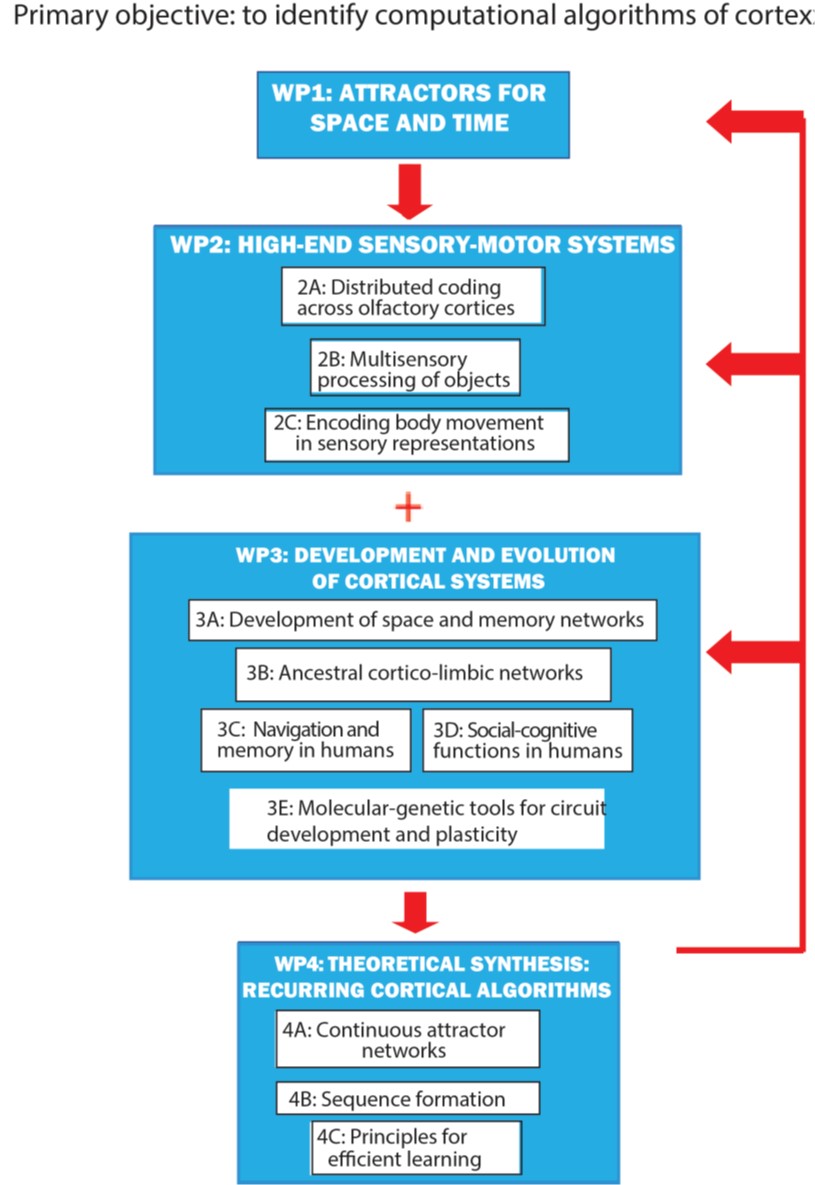WP3C: Cortical computations for navigation and memory in human - Kavli Institute for Systems Neuroscience
WP3C: Cortical computations for navigation and memory in human
About
Motivation
Studying navigation in humans will allow us (i) to test complex behaviours with only minutes of instruction, as opposed to weeks of training as in animal studies, and (ii) to do so while measuring structure and activity across entire cortex at resolutions close to those of animal calcium imaging (7T fMRI voxels <10×10×10 μm3 ). This is required for translation of results in WP1,2 to humans, and like WP3B, will provide a unique opportunity for understanding whole-brain coordination (P4) and computational evolution (P3).
Aims
To investigate the structural and functional implementation of computations for navigation and memory.
3.7 Quantify and compare dimensionality across regions during rest, memory formation, and navigation (P4);
3.8 Look for cortical layer-specific patterns of EC-HPC activity and identify factors that determine the integration of sensory information into coherent maps during navigation, learning and memory (P4).
Implementation
We will use whole brain UHF fMRI data (Section 8b) to identify changes in dimensionality across brain regions related to distinct cognitive operations, using studies in humans to expand the repertoire of behaviours suitable for investigation in animals (WP1).
Using virtual reality-based tasks, in combination with 1kHz eye-tracking, we will determine how visual information during navigation is integrated into maps (as in WP2B) and used for spatial decision making and memory (as in WP2AC).

